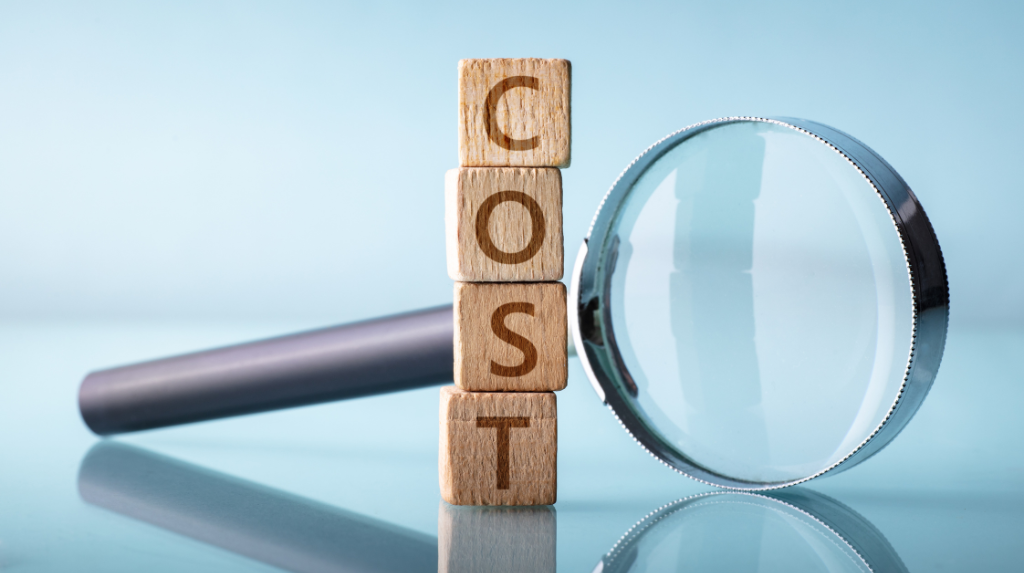If you’re planning to move to the United States permanently, there are a few important things you’ll need to take care of as soon as you arrive. One of the first things on your to-do list should be finding a job. Once you start earning an income, you’ll need a safe place to store your money, which means opening a U.S. bank account.
Having a bank account will make it easier to manage your money and handle daily tasks such as:
- Setting up automatic payments for rent and utilities
- Accessing your money without needing to send wire transfers
- Writing checks
- Using finance apps like Mint to track your spending
In this article, we’ll explain how to open a bank account in the U.S., how to write a check, and how to set up automatic payments.
How to Open a U.S. Bank Account
Most U.S. banks allow non-citizens to open an account, but there are a few requirements you need to meet. If you have a green card (permanent resident status), opening an account will be straightforward. However, if you don’t have a green card, you might need to meet a different requirement: the substantial presence test.
The Substantial Presence Test
To pass the substantial presence test, you need to have lived in the U.S. for at least:
- 31 days during the current year
- A total of 183 days over the past 3 years, including the current year. To calculate this, count all the days you lived in the current year, ⅓ of the days from the previous year, and ⅙ of the days from two years ago.
You can find more details on the IRS website if you want to learn more about this test.
If you don’t have a green card, it’s still possible to open a U.S. bank account if you have an Individual Taxpayer Identification Number (ITIN) and a U.S. address. It’s a good idea to contact your bank to confirm their specific requirements, as they may vary.
Documents You’ll Need to Open an Account
To open a U.S. bank account, you will need to provide several documents. Here’s a general list of what you’ll need:
- Cash deposit: Usually between $25 to $100 to open your account.
- Personal information: Your full name, phone number, and U.S. address.
- Social Security Number (SSN): If you don’t have an SSN, you can use an ITIN instead.
- Utility bill: This proves your U.S. address (a phone or electric bill, for example).
- Two forms of government-issued ID: This can include:
- Your passport (with your visa)
- A U.S. driver’s license or foreign driver’s license
- A work ID card from your employer
- A retail credit card
Banks may have different requirements, so it’s important to double-check with the bank you plan to use. If you don’t have a green card or SSN, you might need to visit the bank in person instead of applying online.
If you qualify for an SSN but haven’t gotten one yet, be sure to check out our guide on how to apply for one.
Applying for an ITIN
If you don’t qualify for an SSN, you can apply for an ITIN (Individual Taxpayer Identification Number) to open a bank account. To apply for an ITIN, you’ll need to submit IRS Form W-7 along with your immigration documents and proof of identity, along with your federal tax return.
There are three ways to apply:
- Mail your documents to the IRS Austin Service Center.
- Apply in person with an authorized Certifying Acceptance Agent.
- Make an appointment at an IRS Taxpayer Assistance Center.
Once you’ve been issued an ITIN, you won’t need to apply for one again. You can file your taxes as usual, and use your ITIN for things like opening a bank account.
How to Write a Check in the U.S.
If you need to pay by check, it’s important to know how to fill one out correctly. Here’s a simple guide on how to write a check from top to bottom:
- Date the check: Write the date in the top right corner. This tells the bank when the check was written.
- Write the recipient’s name: On the line next to “Pay to the order of,” write the name of the person or business you’re paying.
- Write the amount in numbers: In the box next to the dollar sign, write the amount in numbers. For example: $50.30.
- Write the amount in words: Below the recipient’s name, write the same amount in words. For example: Fifty dollars and 30/100. Even if it’s a round number, like $50.00, write “Fifty dollars and 00/100.”
- Add a memo (optional): You can use the “memo” line at the bottom left to note the purpose of the payment. For example: “Rent for August.”
- Sign the check: Finally, sign your name on the bottom line. This authorizes the payment.
Once you’ve filled out the check, you can give it to the recipient, who can then cash or deposit it into their account.
Setting Up Automatic Payments
Having a U.S. bank account also makes it easy to set up automatic withdrawals for bills like rent, utilities, or loan payments. You can set up automatic payments directly through your bank or by visiting the company’s website.
To set up automatic payments, you’ll need to provide the payee’s information, including their name, address, and account number (this is usually listed on your bill). You’ll also need your bank account number and routing number.
You can find these numbers on your checks:
- The routing number is 9 digits long and tells the bank where the funds should go.
- Your account number identifies your specific account.
- A check number keeps track of your checks.
These numbers are listed at the bottom of each check, with the routing number on the left, followed by your account number and check number.
Different banks may have different ways to set up automatic payments, so be sure to check with your bank for specific instructions.
Understanding Credit in the U.S. as a New Immigrant
A credit score is a numerical representation of an individual’s creditworthiness, typically ranging from 300 to 850. It is calculated based on information in your credit report, which includes your borrowing and repayment history. The most widely used scoring models are FICO and VantageScore. FICO requires at least six months of credit history to generate a score, while VantageScore can work with as little as one month. For new immigrants, the challenge lies in being credit invisible—they often arrive without any U.S. credit history, making it difficult to secure loans, rent apartments, or even obtain cell phone contracts.
Building and Maintaining a Good Credit History
To establish a credit history in the U.S., new immigrants can follow these steps:
- Apply for a Social Security Number (SSN) or Individual Taxpayer Identification Number (ITIN): An SSN is essential for most financial transactions, but if you are ineligible, an ITIN can serve as an alternative.
- Open a Bank Account: Having a checking or savings account helps build a financial foundation and provides a record of your banking activity.
- Obtain a Secured Credit Card: This type of card requires a cash deposit that serves as your credit limit. Using it responsibly can help build your credit score over time.
- Pay Bills on Time: Timely payments on loans and utilities contribute positively to your credit history.
- Monitor Your Credit Report: Regularly check your credit report for errors and ensure that all information is accurate.
By following these steps diligently, immigrants can gradually build a strong credit profile, which typically takes about six months to establish a score.
Understanding U.S. Bank fees
New immigrants should be aware of common bank fees to manage their finances effectively:
- ATM Fees: Using ATMs outside your bank’s network often incurs fees. To avoid this, use ATMs affiliated with your bank or those that offer fee-free withdrawals.
- Monthly Maintenance Fees: Many banks charge fees for maintaining accounts unless certain conditions (like minimum balance requirements) are met. Choose accounts with no monthly fees or those that waive fees under specific conditions.
- Overdraft Fees: If you spend more than what’s available in your account, banks may charge overdraft fees. Setting up alerts for low balances can help avoid these charges.
By understanding these fees and selecting the right banking products, immigrants can save money and manage their finances more effectively.
The Importance of Direct Deposit
Direct deposit is an efficient way to receive payments such as salaries or government benefits directly into your bank account.
Benefits of Direct Deposit:
- Convenience: Funds are available immediately on payday without the need to visit the bank.
- Security: Reduces the risk of lost or stolen checks.
- Automatic Savings: Some employers allow you to split deposits between checking and savings accounts.
To set up direct deposit, provide your employer with your bank account details, including the routing number and account number. This process typically involves filling out a form provided by your employer.
Sending Money Abroad
New immigrants often need to send money back home to support family members. Here are some effective methods:
- Wire Transfers: Banks offer wire transfer services but often charge high fees.
- International Money Transfer Services: Services like Western Union, MoneyGram, and newer digital platforms like Wise or Remitly provide competitive rates and lower fees.
Comparison of Remittance Services:
| Service | Average Fee | Transfer Speed |
|---|---|---|
| Western Union | High | Minutes |
| MoneyGram | Moderate | Minutes |
| Wise | Low | 1-3 Days |
| Remitly | Low | Minutes to Days |
Choosing the right service depends on factors like cost, speed, and convenience.
Setting Up Online Banking and Mobile Payments
Managing finances through online banking and mobile payment systems simplifies transactions for new immigrants:
- Online Banking: Most banks offer online platforms where you can view balances, transfer funds, pay bills, and monitor transactions securely.
- Mobile Payment Systems: Apps like Apple Pay, Google Pay, and Venmo allow users to make payments easily using their smartphones. Ensure that you use these services safely by enabling security features like two-factor authentication.
Building a U.S. Bank Account History
Establishing a positive banking history is crucial for integrating into the U.S. financial system:
- Pay Bills on Time: Consistent on-time payments demonstrate financial responsibility.
- Avoid Overdraft Fees: Keeping track of your account balance prevents overdrafts that can negatively impact your banking history.
Having a U.S. bank account not only facilitates daily transactions but also helps in building credit history when linked to credit products.
How to Avoid Scams and Fraud in the U.S. Banking System
Scams and fraud in the U.S. banking system are prevalent, particularly targeting vulnerable populations such as immigrants. Understanding these scams, safeguarding personal information, and navigating the banking system effectively are crucial for financial security.
Immigrants often face unique challenges that make them prime targets for scams. Here are some common scams:
- Immigration Services Scams: Scammers impersonate immigration officials, promising expedited citizenship or legal assistance for a fee. They may request wire transfers, which are irreversible once sent.
- Fake Job Offers: Scammers pose as employers offering jobs that require upfront fees for work visas or training. These offers usually come with a sense of urgency to pressure victims into acting quickly.
- Rental Scams: With housing shortages, scammers post fake rental listings at attractive prices to lure immigrants into paying deposits for non-existent properties.
- Bank Account Scams: Fraudsters create fake bank websites or impersonate bank representatives to extract personal banking information from victims.
To avoid these scams, immigrants should be cautious of offers that seem too good to be true, verify the legitimacy of job offers and rental listings, and never share personal information over the phone or email unless they are sure of the recipient’s identity.
Tips on Safeguarding Personal Information and Detecting Fraud
- Be Skeptical: Always question unsolicited communications that ask for personal information.
- Verify Sources: Contact organizations directly using official contact information rather than through links or numbers provided in suspicious messages.
- Use Secure Payment Methods: Avoid wire transfers and prepaid cards when making payments; use credit cards where possible as they offer better fraud protection.
- Monitor Financial Accounts: Regularly check bank statements and credit reports for unauthorized transactions or discrepancies.
Understanding Social Security Numbers (SSN)
A Social Security Number (SSN) is a nine-digit number assigned to U.S. citizens and eligible residents for tracking earnings and benefits. It is crucial for several reasons:
- Banking Requirements: Most banks require an SSN to open an account, apply for loans, or establish credit.
- Credit Building: An SSN is essential for building a credit history in the U.S., which impacts loan eligibility and interest rates.
How to Obtain an SSN
New immigrants can apply for an SSN through the Social Security Administration (SSA) by submitting Form SS-5 along with required documentation such as immigration status proof and identification. Obtaining an SSN is critical for establishing a financial identity in the U.S.
U.S. Banking Regulations for Immigrants
Understanding banking regulations is vital for compliance:
- Know Your Customer (KYC): Banks must verify the identity of their customers to prevent fraud and money laundering. This includes collecting personal information like an SSN, address, and identification documents.
- Anti-Money Laundering (AML): Regulations require banks to monitor transactions for suspicious activity. Immigrants should be aware of these regulations as they may impact their ability to open accounts or access services.
New immigrants should familiarize themselves with these regulations to ensure compliance and avoid potential issues with banking institutions.
Understanding Bank Statements and Managing Finances
Reading bank statements is essential for effective financial management:
- Identify Transactions: Understand each entry, including deposits, withdrawals, fees, and interest earned.
- Track Expenses: Categorize spending to identify areas where you can cut costs.
- Plan for Future Expenses: Use bank statements to forecast future spending and savings goals.
The Role of U.S. Banks in Supporting Immigrants
U.S. banks play a significant role in helping immigrants achieve financial independence:
- Financial Education: Many banks offer workshops on budgeting, saving, and credit management tailored specifically for immigrants.
- Personal Loans: Some banks provide loans designed for newcomers who may not have established credit histories.
- Credit Building Programs: Programs aimed at helping immigrants build credit can facilitate access to larger loans in the future.
By leveraging these resources, immigrants can navigate the banking system more effectively and work towards financial stability.
Whether you’re opening a bank account for the first time, learning how to write a check, or setting up automatic payments, understanding the basics of U.S. banking will help you manage your finances more easily as a new immigrant. Be sure to research your options and gather the necessary documents ahead of time to make the process as smooth as possible. If you have any questions or need further assistance, contacting your bank directly is always a good option.
How Law and Visas Can Help?
At Law and Visas, our team of expert immigration consultants is here to make your travel to the U.S. straightforward and successful. Whether you’re applying for an L-1 Visa or an F-1 Visa, we handle every step—from preparing your application to gathering the required documents.
Our Immigration Consultants and Lawyers ensure that your application meets the highest standards, with no details missed. We’ll also keep you informed throughout the process and coordinate with the immigration office or embassy on your behalf.
Law and Visas has a strong record of helping clients secure the visas/permits they need to visit the United States. You can call us today at +234 812 5505 986 to learn how we can help you.





